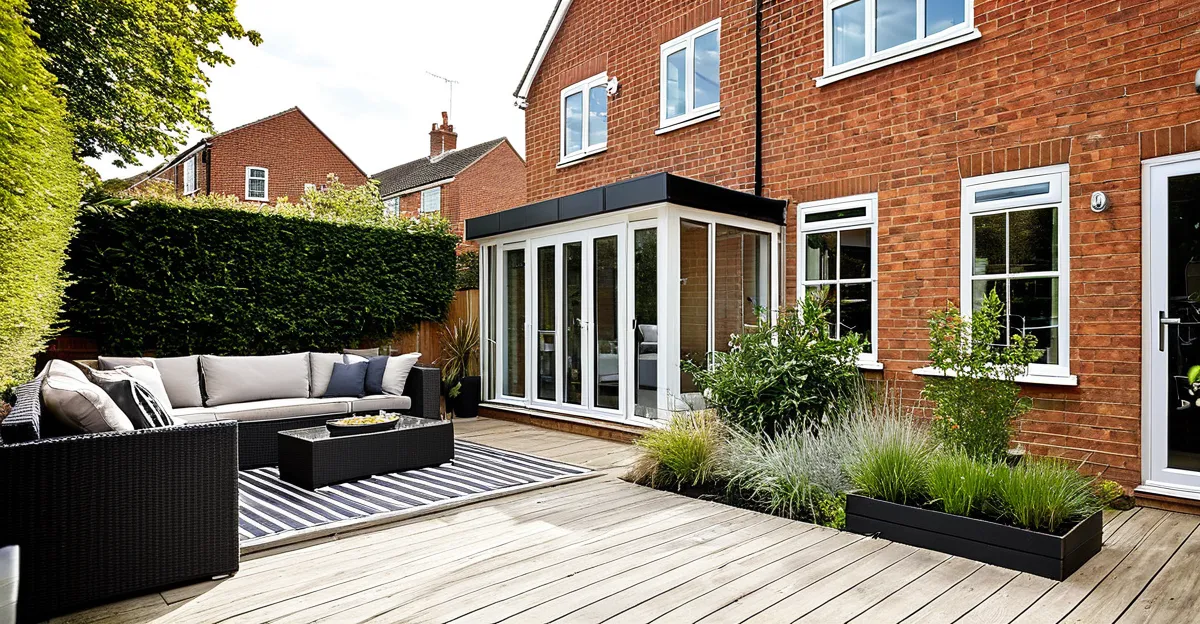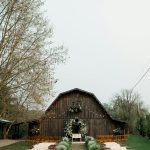Understanding the Challenges of Urban Outdoor Spaces
Navigating the complexities of urban outdoor space optimization in the UK requires attention to both space constraints and the distinct challenges faced by urban gardeners. With limited land available, particularly in densely populated areas, urban homes often boast smaller gardens. These space constraints necessitate a strategic approach to design.
Common challenges include poor soil quality, limited sunlight, and environmental pollution, which can hinder plant growth. Additionally, urban noise and traffic can disrupt the tranquility typically sought in garden spaces. By recognizing these limitations, homeowners can better target their solutions.
Also read : How can you optimize storage in small UK apartments?
The importance of thoughtful design cannot be overstated when trying to maximize limited outdoor spaces. Utilizing vertical spaces, such as walls or fences, for planting can significantly enhance the usable area. Employing creative solutions like movable planters and integrated furniture also helps balance aesthetics with practicality, ensuring that each square meter is used effectively. Thoughtful planning is key to overcoming these urban gardening hurdles, helping transform city gardens into functional and appealing retreats.
Innovative Design Ideas for Small Outdoor Areas
When you’re faced with small garden design challenges, creativity becomes your best friend. Vertical gardening solutions can transform limited spaces into lush havens. This technique involves using structures like trellises or wall-mounted planters to grow upwards rather than outwards, conserving ground space while adding verdant beauty.
Also read : How Do Interior Design Trends Influence Our Daily Mood at Home?
Incorporating layering and zoning techniques in your creative outdoor layouts helps establish distinct areas, lending a more spacious feel. Think of multiple levels with different functions or planting zones: a seating area, herb corner, and perhaps a potted flower bed. This approach not only maximizes the utility of the space but also enhances the visual variety and intrigue of the garden.
Moreover, well-placed pathways and borders can contribute significantly to a garden’s visual appeal. A winding path can introduce curiosity and exploration while sturdy borders can define spaces and provide contrast. These elements work in tandem to transform a cramped outdoor area into a well-organized, inviting sanctuary.
Multi-functional Furniture for Urban Outdoor Living
Selecting the right outdoor furniture solutions can significantly impact how effectively an urban garden is utilized. In cramped outdoor spaces, choosing space-saving furniture that serves multiple purposes is essential. This type of furniture not only adapts to various activities but also optimizes the available area, enhancing utility and flow.
Foldable and stackable furniture are ideal choices for those looking to streamline functionality while maintaining ample space. Foldable tables and chairs can easily be stored when not in use, freeing up valuable floor space for other activities. Stackable seating options are equally advantageous, allowing for compact storage and easy access when needed.
When selecting outdoor furniture, it’s important to consider materials that can withstand the elements. Weather-resistant options such as on metal, treated wood, or durable plastics ensure longevity. Opting for furniture made from these materials not only prevents deterioration but also reduces maintenance needs, providing a cost-effective and practical solution to enhancing urban outdoor spaces.
Plant Selection and Arrangement Techniques
Urban gardening presents unique challenges, especially in small spaces. Choosing the right plants is crucial for success. Herbs like chives and mint thrive in limited spaces due to their compact size and utility in cooking. Perennials such as lavender and hydrangeas offer year-round beauty and minimal maintenance, making them ideal for urban gardeners seeking both aesthetic and functional benefits.
Arrangement strategies can maximize both light and space. Utilizing tiered planters or raised beds ensures plants receive adequate sunlight, essential in shaded urban environments. This approach not only maximizes the vertical space but also eases maintenance by keeping plants accessible.
Container gardening offers flexibility, allowing plants to be repositioned based on seasonal light changes or personal preference. Pairing large pots with smaller ones creates visual interest while optimizing space usage. Additionally, choosing containers with built-in drainage helps maintain healthy roots by preventing water-logging, key in variable urban climates.
To further manage space, consider the use of compact varietals specifically bred for small gardens. These plants provide similar aesthetics and yields as their larger counterparts but require significantly less room. Embracing these techniques can transform urban outdoor spaces into vibrant, productive gardens even in the most constrained environments.
Clever Storage Solutions for Outdoor Areas
Creating an organized and inviting outdoor space can be challenging, particularly when faced with space constraints in urban environments. One effective strategy involves maximizing vertical space for storage. By installing sturdy shelves or versatile hooks, you capitalize on every inch of available room. These vertical solutions offer a smart way to keep gardening tools, decor, and other outdoor essentials neatly arranged without encroaching on limited ground space.
Another clever approach is integrating decorative storage options that complement the garden’s aesthetic. Look for storage units that blend seamlessly with your current design. This ensures that practical elements like storage do not detract from the garden’s overall visual appeal. For example, consider benches with hidden compartments or attractive storage boxes that double as seating.
Keeping the area organized and clutter-free is crucial for creating a tranquil and enjoyable urban garden. Regular maintenance, such as tidying up tools and discarding unused items, contributes significantly to maintaining a serene atmosphere. By employing these storage techniques, you can optimize your space while ensuring that your outdoor area remains both functional and beautiful.
Local Regulations and Climate Considerations
In the UK, gardening regulations can significantly influence urban outdoor spaces, especially when modifying existing structures or implementing new designs. Understanding local regulations is crucial before starting any garden project. Planning permissions may be required for substantial changes such as erecting large garden structures or altering shared boundaries. Homeowners should consult local authorities to ensure compliance with these planning permissions, avoiding potential legal issues.
The urban climate in the UK presents unique challenges for gardeners, impacting everything from plant selection to garden design. Given the variability in weather conditions—including frequent rain and sporadic sunshine—urban gardeners must select plants that thrive in such climates. Opting for species known for their resilience in fluctuating environments, like native species or adaptable perennials, can secure the garden’s long-term success.
Staying informed about urban gardening regulations and climate considerations is essential for creating a thriving garden. Local government websites and horticultural societies often offer resources to help gardeners navigate these challenges. Guidance from these sources ensures that urban gardeners remain compliant and that their gardens can withstand the urban climate.
Case Studies and Inspiration from Successful Urban Gardens
Exploring inspiring urban garden success stories can provide valuable insights and spark creativity for those striving to optimize their own outdoor spaces. Many urban gardens serve as design inspiration by demonstrating innovative solutions to common challenges. These include how to effectively use limited space, and incorporation of multi-functional elements while maintaining aesthetic appeal.
A notable example might be London’s community rooftop gardens, which emphasize the efficient use of vertical space and community collaboration. These gardens often feature vertical planters and shared garden furniture, transforming rooftops into communal green spaces that enhance social interactions and environmental quality.
Understanding key features that contributed to their success—such as the integration of native plants, water-efficient systems, and communal engagement—can guide personal projects. Learning from such examples not only provides practical insights into what works in small urban spaces but also highlights the importance of creating gardens that are both sustainable and community-centered.
Takeaway lessons from these urban success stories include the significance of thorough planning and the adaptability of design choices to the unique constraints of urban environments. These concepts can be adapted to suit individual preferences and spatial limitations, inspiring gardeners to create functional and enjoyable outdoor spaces within the confines of urban living.
Expert Tips and Insights for Enhancing Outdoor Spaces
Enhancing urban garden optimization requires not just creativity and effort, but also insights from seasoned professionals. Drawing upon the wisdom of urban gardening experts can illuminate the path towards overcoming design challenges.
Interviews with Experts
For urban gardening enthusiasts, interviews with industry professionals can be a goldmine of expert gardening advice. These experts often emphasize the importance of understanding your specific environment first. By assessing the local climate, understanding soil conditions, and recognizing space constraints, you set the groundwork for a thriving garden. Experts often promote a solution-oriented mentality, advocating for adaptability and resourcefulness in garden design.
Practical Recommendations
Expert recommendations frequently highlight practical methods for managing small spaces more efficiently. Vertical gardening designs are championed as a solution to space scarcity, allowing plants to thrive upwards and conserve ground area. Experts also suggest using weather-resistant materials in structures and planters to fortify gardens against the unpredictable urban climate. Such steely resilience is foundational to ensuring the longevity and sustainability of your outdoor sanctuary.
Ongoing Learning and Community Engagement
Urban gardening experts underline the significance of staying informed and connected. Engaging with community gardening groups and participating in gardening workshops can enhance your skills and knowledge. These gatherings provide a platform for exchanging tips, which can be particularly enlightening for those looking to optimize their urban spaces amidst environmental challenges. Regular learning and active participation not only improve personal gardening practices but also bolster community relations and collective environmental responsibility.










